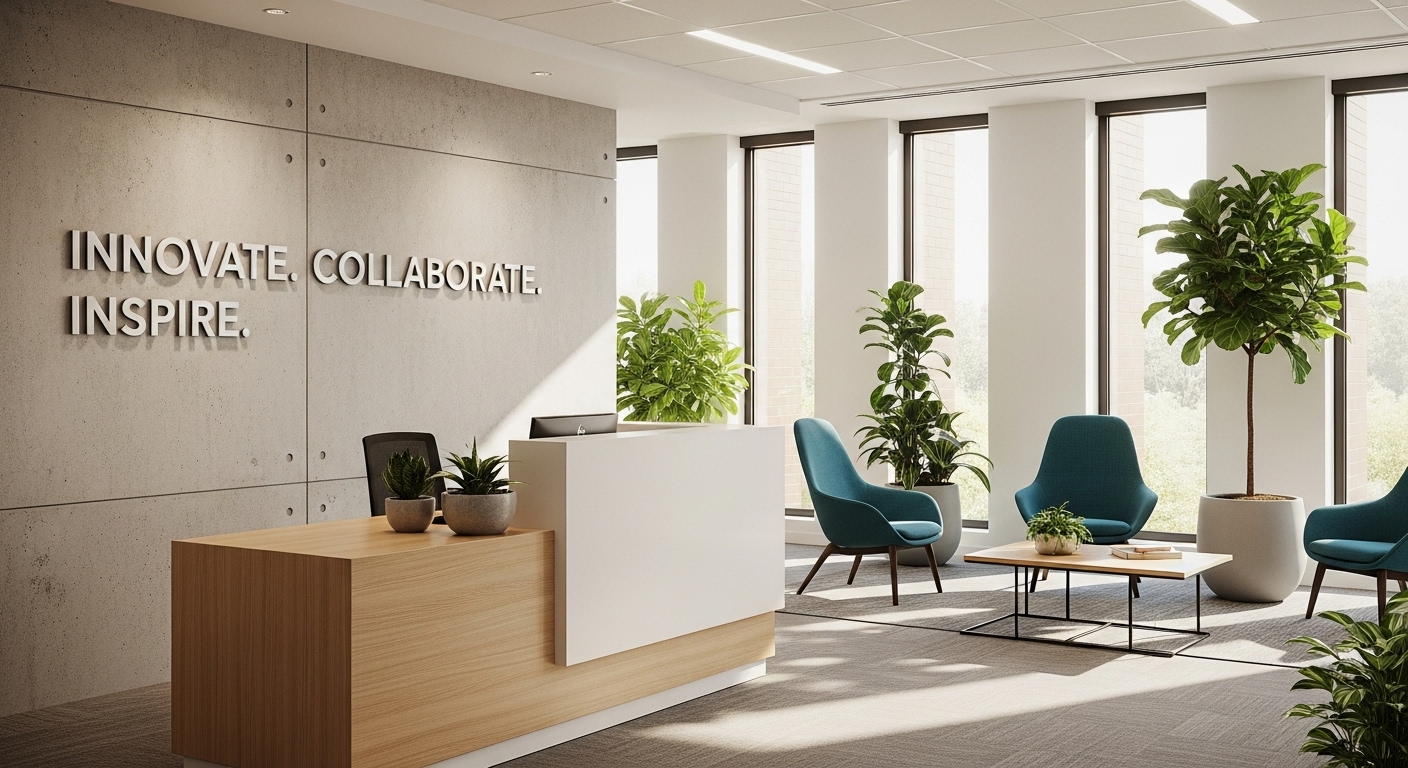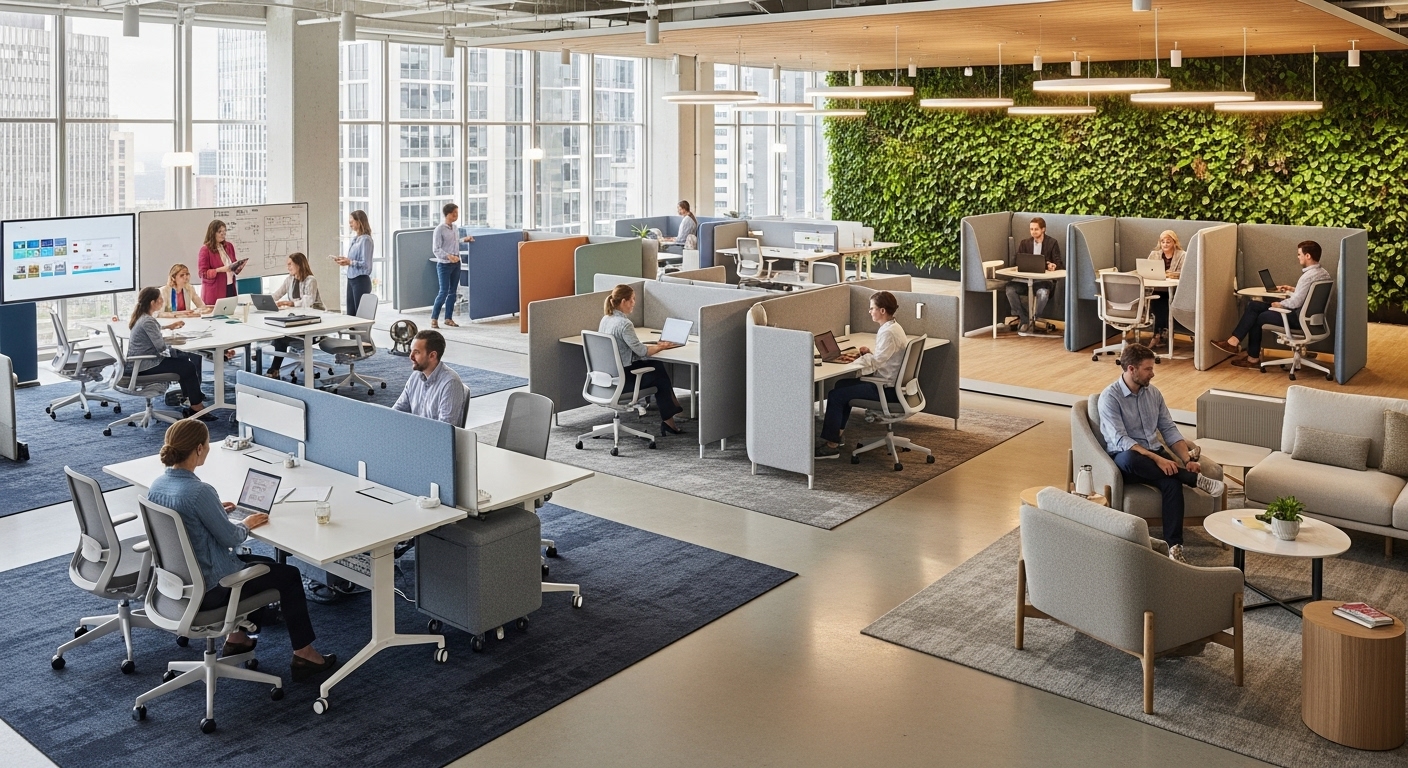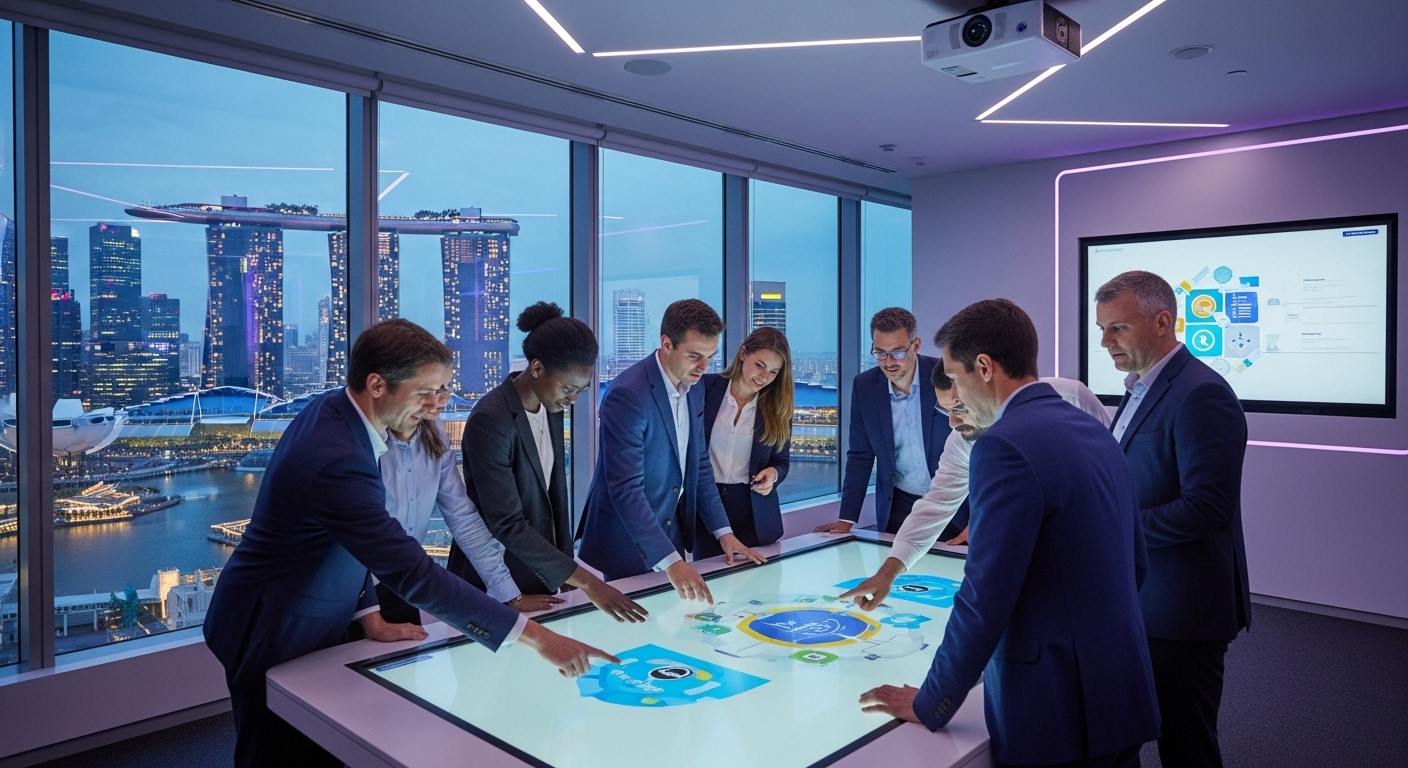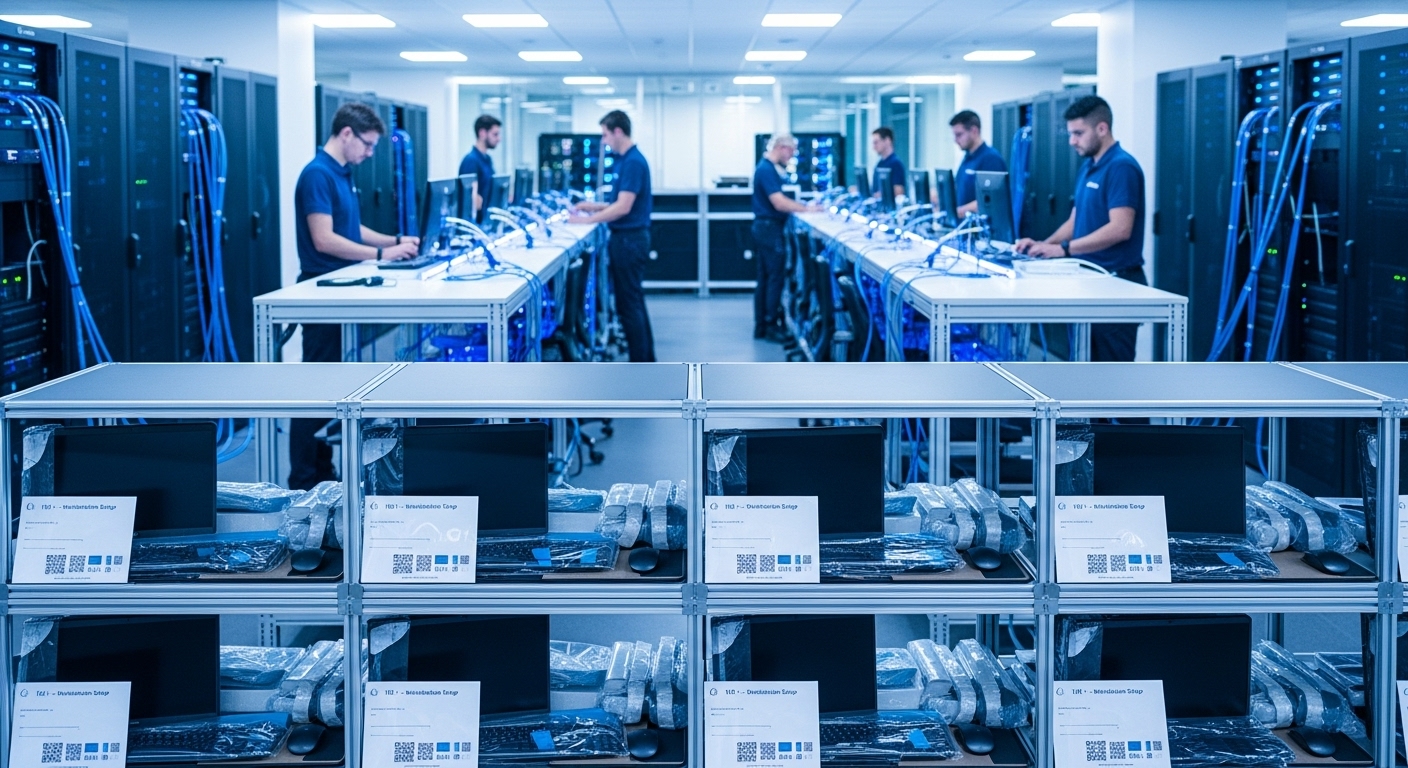When business leaders think about ‘branding a space,’ their minds often jump to the most obvious applications: a large logo in the lobby, a mission statement printed on a wall, or perhaps a colorful, Instagram-worthy mural. While these elements have their place, they represent only the surface layer of what’s possible. True environmental branding is not about decoration; it’s about strategic communication. It’s the practice of transforming a physical space into a living, breathing embodiment of a company’s identity, values, and story. In an era where the office must compete with the home as a place to work, creating a compelling, purpose-driven environment is more critical than ever. It’s about crafting a series of intentional brand touchpoints that guide, inspire, and engage every person who walks through the door, from potential new hires to seasoned team members and high-value clients. This guide will take you beyond the mural, exploring the tactical and strategic ways to infuse your brand’s DNA into every corner of your workspace, creating an immersive experience that reinforces culture and drives business objectives.
What is Environmental Branding (And Why It’s More Than Just Decor)
Environmental branding, often called experiential graphic design (EGD), is a multidisciplinary approach that merges graphic design, architecture, interior design, and industrial design to shape a person’s experience of a physical space. It goes far beyond aesthetics. Where interior design focuses on the look and feel of a space for comfort and function, environmental branding adds a layer of communication and storytelling. Its primary goal is to translate a brand’s abstract identity—its values, voice, and mission—into tangible, spatial experiences. This strategic practice transforms passive environments into active participants in the company’s narrative. For instance, a tech startup valuing transparency and collaboration might use glass walls and open-plan seating, but environmental branding would further this by adding custom wayfinding graphics that use a witty, on-brand tone of voice or by designing meeting rooms named after famous innovators, reinforcing the company’s core purpose. The ROI of such an investment is significant. A well-branded environment directly impacts employee engagement and morale. A space that reflects company values makes employees feel like they are part of something bigger, fostering a sense of belonging and pride. This is crucial for talent attraction and retention, as a thoughtfully designed office serves as a powerful recruitment tool, offering a tangible glimpse into the company culture before a candidate even receives an offer. As one study noted, a thoughtfully designed workplace can improve employee satisfaction and productivity by over 20%.
The First Impression: Designing Your Welcome and Reception Area
The reception area is your brand’s first handshake. It’s the most critical touchpoint, setting the tone for the entire visitor experience, whether for a client, partner, or prospective employee. This space must do more than just house a desk and a waiting area; it must immediately communicate who you are as a company. The design process should start with the core message you want to convey. Is your brand innovative and forward-thinking? A custom-fabricated reception desk with integrated lighting and a digital welcome screen might be appropriate. Is it established, trustworthy, and traditional? Natural materials like reclaimed wood, stone, and leather seating can evoke a sense of permanence and reliability. The wall behind the reception desk is prime real estate. Instead of a simple logo, consider a more nuanced approach. This could be a timeline of company milestones rendered in dimensional letters, a digital display showcasing current projects, or a beautifully crafted piece of art that subtly incorporates brand colors and motifs. Every element should be intentional. The choice of lighting—whether warm and ambient or bright and energetic—can dramatically alter the mood. Even the scent and soundscape can be curated, with a subtle, custom fragrance or a curated playlist that aligns with your brand’s personality. This multi-sensory approach ensures the first impression is not just seen, but felt, creating a memorable and positive introduction to your brand’s world.
Infusing Brand into Collaborative and Social Spaces
Once past the reception, the brand story must continue to unfold in the spaces where your team does its most important work: collaboration and socialization. These areas—meeting rooms, breakout zones, and kitchens—are the cultural heart of the office. Branding them effectively is key to reinforcing desired behaviors and fostering community. A powerful and simple strategy is to develop a thematic naming convention for meeting rooms. Instead of ‘Conference Room A,’ a company focused on global growth could name its rooms after cities where it has offices or aspires to be. A software company might name them after programming languages or famous pioneers in computing. This small detail serves as a constant, subtle reminder of the company’s mission and vision. The design of these spaces should also support their function through a brand lens. For a company that values high-energy brainstorming, a collaboration hub could feature writable walls, vibrant colors, and flexible, modular furniture. In contrast, a brand that prides itself on precision and deep focus might design ‘quiet rooms’ with acoustic paneling, muted tones, and graphics inspired by data patterns. The kitchen or café area offers another prime opportunity for cultural branding. It’s a natural gathering spot. Here, you can use murals, graphics, or even custom-printed tiles to tell a story about the company’s history, celebrate team achievements, or simply display brand values in a relaxed, social context. These spaces should feel less corporate and more communal, encouraging the informal interactions where company culture is truly built.
From Color Palettes to Core Values: The Language of Materials and Graphics
The visual language of your brand is spoken through color, material, and form. Translating this language into a three-dimensional space requires a deep understanding of how these elements evoke emotion and convey meaning. Color psychology is a powerful tool in environmental branding. The strategic use of your brand’s color palette can influence mood and behavior. For example, splashes of an energetic accent color like yellow or orange can stimulate creativity in a brainstorming area, while calming blues and greens can promote focus in individual workstations. It’s about using color with purpose, not just painting walls. The choice of materials is equally important. The texture and nature of surfaces contribute to the subconscious narrative of your brand. Polished concrete and exposed metal might speak to an industrial, raw, and innovative identity. Warm woods and soft textiles can communicate a brand that is human-centric, comfortable, and stable. The key is authenticity; the materials should feel like a natural extension of the brand’s character. Graphics and typography are where you can be most direct. This is how you translate abstract core values like ‘Integrity,’ ‘Innovation,’ or ‘Community’ into visual form. This could manifest as a large-scale typographic installation in a hallway, custom-designed icons for different departments, or subtle patterns derived from your logo that are etched into glass partitions. The goal is to weave the brand’s verbal and visual identity into the very fabric of the building, creating a cohesive and immersive environment that constantly, yet subtly, reinforces what your company stands for.
Functional Branding: Wayfinding and Practical Touchpoints
Effective environmental branding seamlessly integrates with the functional aspects of an office, turning utilitarian elements into opportunities for brand expression. Wayfinding is a prime example. Navigational signage is a necessity in any large space, but it doesn’t have to be generic. Instead of standard signs, a branded wayfinding system can use your company’s unique typography, color palette, and even its brand voice. For a playful, creative brand, directional signs might include witty phrases. For a sleek tech company, the wayfinding could be integrated into digital screens or projected onto floors. This transforms a purely functional system into an engaging part of the brand journey through the office. Beyond signage, branding can be infused into countless everyday touchpoints. Think about the small details that employees interact with daily. Branded mousepads, custom screen savers on company computers, and notebooks featuring a subtle brand motif all contribute to a cohesive experience. Even the mugs in the kitchen or the design of the employee ID cards are opportunities to reinforce the brand. These details might seem minor, but their collective impact is significant. They create a sense of unity and completeness, showing a level of care and intentionality that communicates that the company values its brand and, by extension, its people. When even the most practical elements of the workspace align with the brand identity, it creates a powerful, all-encompassing environment where the culture is not just discussed but lived.
The Digital Layer: Integrating Technology for a Dynamic Brand Experience
In today’s workplace, the physical environment is increasingly intertwined with a digital layer. Integrating technology into your environmental branding strategy is essential for creating a modern, dynamic, and responsive space. Static graphics and murals are powerful, but digital displays offer a flexibility and timeliness that can keep your brand story fresh and relevant. Interactive screens in the reception or common areas can do far more than display a logo. They can be used to create engaging experiences, such as an interactive map of the company’s global reach, a live social media feed featuring company mentions, or a digital ‘wall of fame’ that showcases employee achievements in real-time. This transforms the space from a static gallery into a living, evolving dashboard of the company’s pulse. Digital signage in meeting rooms can be linked to scheduling software, displaying the room’s availability along with the logo or branding of the team that booked it. Large-scale video walls can serve as powerful backdrops, displaying ambient brand-aligned visuals, company announcements, or cinematic videos that tell the brand’s origin story. As one expert puts it:
“Technology allows the branded environment to become a platform for ongoing storytelling, rather than a single, static statement.”
This digital layer ensures your workspace can adapt and evolve alongside your business, showcasing new projects, celebrating new milestones, and reflecting the current focus of your team, making the brand experience consistently current and engaging.
Conclusion
Branding your workspace is a profound opportunity to build and reinforce your company’s culture and identity. It requires a strategic shift in thinking—away from viewing the office as a mere container for work and towards seeing it as a powerful communication tool. Moving beyond the simple mural or lobby logo involves a holistic approach, where every design choice is an intentional brand touchpoint. From the first impression in the reception area to the subtle branding of functional elements like wayfinding, each component should tell a piece of your story. By carefully selecting materials and colors, infusing brand identity into collaborative and social hubs, and layering in dynamic digital technology, you create an immersive world for your team and visitors. This isn’t an exercise in corporate vanity; it is a strategic investment in your people and your future. A well-branded environment acts as a cultural anchor, fostering a sense of belonging and shared purpose that can boost morale, improve retention, and attract top talent. It transforms your physical location from an operational expense into a strategic asset—a space that doesn’t just house your brand, but actively amplifies it every single day. Ultimately, your workspace should be your brand’s most convincing storyteller, conveying your values and vision without saying a word.





